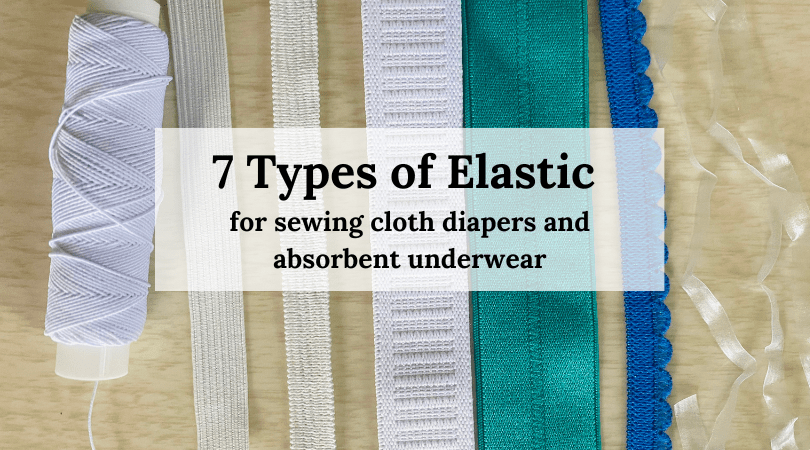This post may contain affiliate links. To see full disclosure and my philosophy regarding affiliates, click here.
When sewing cloth incontinence garments from cloth diapers to leakproof underwear, elastic is an essential tool needed to create a well fitting and functioning product. Elastic is found in many different types of items like waistbands of leggings, cloth diapers, underwear, swimwear, scrunchies, bed sheets, etc. It allows fabric to stretch to accommodate the body but then retract to fit snuggly and prevent the fabric from getting stretched out and losing its shape.
When making your own cloth incontinence products, it’s important to choose the right type of elastic for sewing cloth diapers and absorbent underwear. For example, using knit elastic for leg openings instead of braided elastic will give you a better fit. In addition, the type of elastic you’ll need for a waistband depends on the style of waistband you are making.
While there are a ton of different types of elastic, I’m going to focus on only the 7 types relevant to sewing cloth incontinence and related items.
Table of Contents
How to Sew with Elastic
Where to Buy Elastic
Knit Elastic
Braided Elastic
Woven Elastic
Fold-Over Elastic
Lastin
Picot
Elastic Thread
How to Sew with Elastic for Cloth Diapers
When using elastic for sewing cloth diapers and other incontinence products, you will need to use a zigzag or 3-step zigzag stitch unless you are sewing the elastic in a casing. A zigzag stitch allows the stitches to stretch with the fabric and not break. Simply tack down the elastic at the beginning and end of where you’re sewing and stretch it evenly as you stitch.
To create a casing, you can fold down the top of your item and straight stitch around it, making sure to leave an opening. Then, using an elastic threader or safety pin, gently feed the elastic through the casing. Stitch together the ends and enclose the elastic by finishing topstitching around the casing.
Where to Buy Elastic
Over the years I have bought elastic from a variety of places. While I noticed minor differences in the quality of the elastic, they have all functioned just fine.
Knit elastic – Since I sew SO MANY cloth incontinence items, I buy ⅜” elastic by the 144 yard roll. I have bought it from the now-defunct Diaper Sewing Supplies and Fabric.com, as well as from Onlinefabricstore.net.
I’ve also used the Dritz brand from Joann Fabric and Craft.
Braided and Woven Elastic – I so rarely use braided elastic, but when I do, I either buy it from Joann Fabric or Wazoodle. Though honestly, you can get it just about anywhere; it’s easier to find than knit elastic.
Fold-Over Elastic (FOE) – Wazoodle is my go to for buying FOE. I’ve also bought it from Very Baby, though they tend to be frequently sold out of things. Dritz’s FOE comes in black and white, though it’s NOT my favorite because it is very stiff and heavy compared to other places. This is fine for waistbands, but not so much when the elastic needs to go around a leg opening.
Lastic – Again, I get this from Wazoodle, though many places carry it.
Picot – Nature’s Fabric carries a small selection of picot, though I really like using Etsy for getting these trims. I bought a random lot that had a nice selection and has been great for experimenting with.
Elastic Thread – I’ve used both Gutermann and Dritz brand of elastic thread. I’ve found that though it’s more expensive, the Gutermann thread is more sturdy.
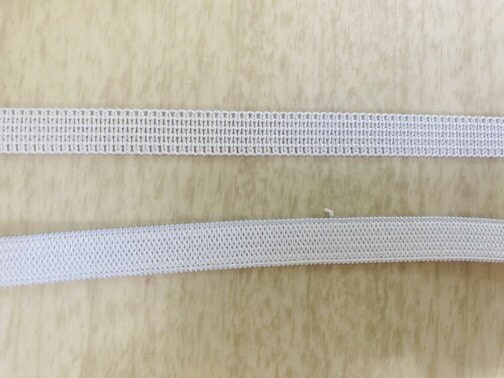
1. Knit Elastic
Knit elastic is a soft, stretchy elastic that is ideal for applications that require the elastic to be sewn down like in leg openings. You can tell knit elastic from braided in that knit elastic will stretch to reveal tiny squares whereas braided elastic will just have long lines.
Knit elastic holds its shape when stitched down and comes in a variety of widths. I’ve used a bunch of different brands of knit elastic over the years in the leg openings of my garments. Honestly, I haven’t noticed any performance differences.
I like to use ⅜” elastic because it is easy to sew and gives a nice, snug fit on the legs.
Just avoid braided elastic for leg openings. It’s going to give you a more stretched out leg opening, not to mention it gets skinnier when stretched which makes it more challenging to sew.
2. Braided Elastic
Braided elastic is a lightweight, durable elastic that is often used for waistbands, sleeves, and leg openings. Basically, for any application that requires a casing for the elastic. It comes available in widths ranging from 1/8″ to 1″.
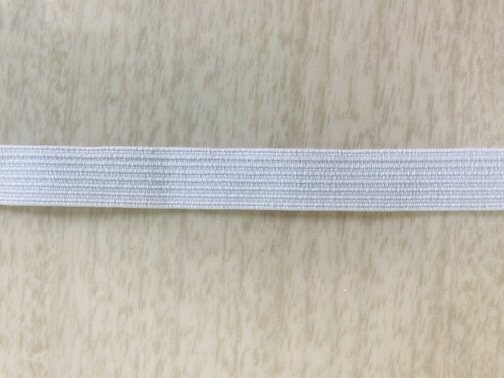
I don’t recommend using this type of elastic sewn down for leg openings because it tends to stretch out a lot more when stitched through compared to knit elastic. The only time you’d really need to use braided elastic is if you are using the casing method for a waistband on a cloth diaper or for the pocket on a pocket diaper.
Since cloth diapers tend to get heavy when wet, you want to use a nice 1” wide or more elastic to help hold it up. The downside to using the casing method is that with the elastic floating in the casing, it has a tendency to roll and get twisted. For this reason, I find that if I stitch through the elastic along the vertical seam in the waistband, it helps to prevent the elastic from rolling.
The other option is to use a woven or non roll elastic which is stiffer and less likely to roll.
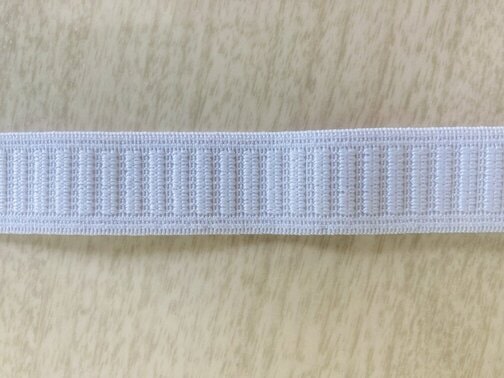
3. Woven Elastic
Also called non-roll elastic, woven elastic is firmer and less stretchy than braided or knit elastic. It’s often used in heavy-duty garments such as denim jeans or canvas work pants because it retains its shape.
This works great in the casing of the pull on diaper, especially if you are using fleece, since fleece is heavy and you’ll lose some stretch if you use regular braided elastic.
In addition, since woven elastic holds its shape so well, you don’t really need to cut negative ease on it. Just cut the elastic to a length that will give you a snug fit on your waist. Woven elastic is available in widths ranging from 3/8″ to 3″. For waistband applications in cloth diapers, you want to use at least a 1” width.
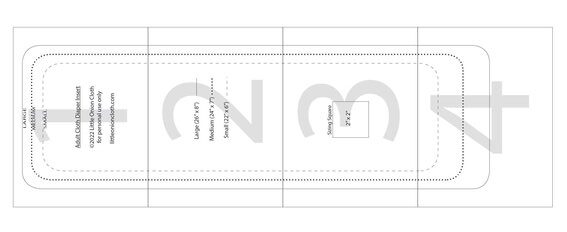
4. Fold-Over Elastic
Fold-over elastic (FOE) is a wide, flat elastic with a crease down the center and meant to fold in half over a seam like a binding. It’s often used to finish the edges of garments, such as the neckline or armholes. It can also be used for waistbands or leg openings and for trimming a cloth diaper instead of sewing it by turning and topstitching.
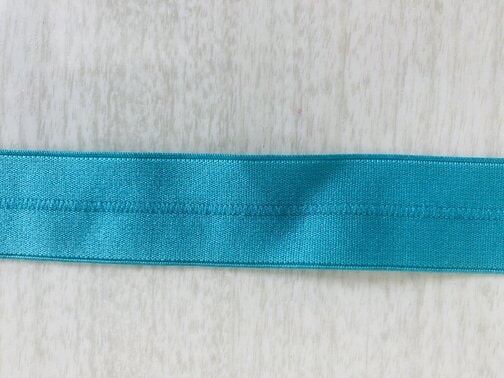
FOE is available in a variety of colors and prints, making it a great choice for adding a pop of color to your cloth incontinence products. It gets sewn with a 3-step zigzag stitch.
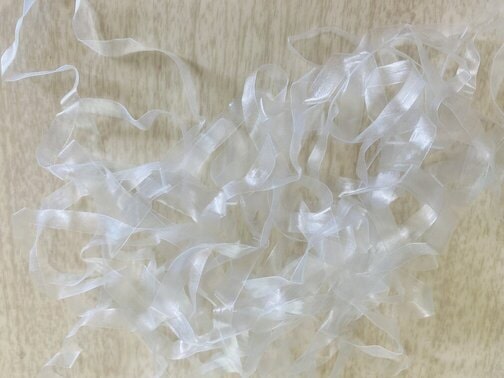
5. Lastin
A thin, clear elastic, you’ll find lastin in items like swimwear, sportswear, and underwear. It’s very durable and can stand up to chlorine and perspiration without breaking down over time. It comes in widths ranging from 1/8″ to 3/4″. Since it’s essentially a clear piece of stretchy plastic, I have found that it can be slippery and difficult to sew. It’s not exactly beginner sewer friendly.
It works best when sewn to thin, stretchy materials, so I definitely don’t recommend using this type of elastic in pull ups or diapers. For leak proof underwear (or regular underwear) it works great!
6. Picot Elastic
Picot elastic is a type of elastic that’s available in a wide range of colors and patterns. It has a row of fancy loops at the top. You’ll find it most commonly used on lingerie. Like lastin, I don’t recommend using this type of elastic on diapers and pull ups. However, it could work on a diaper cover since a diaper cover is only one layer of fabric.
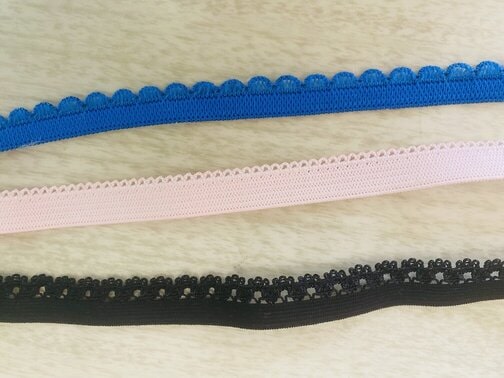
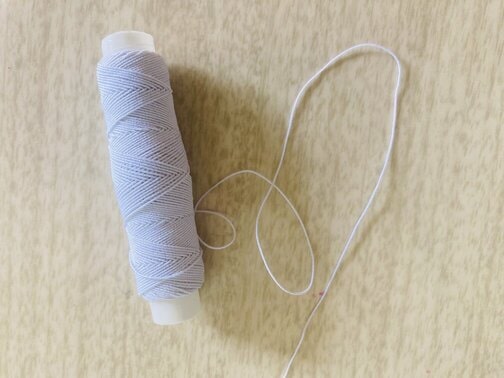
7. Elastic Thread
Elastic thread comes on a spool and can be used in your sewing machine in place of the bobbin thread. It’s commonly used in applications that require gathering. I use it for shirring my elastic waist tab extenders for cloth diapers.
I have used both the Gutermann and Dritz with no issues, though I find that the Gutermann elastic thread is more sturdy. It’s important to note that elastic thread is used in the BOBBIN only and never as the top thread. To prevent it from stretchy, it needs to be wound onto the bobbin by hand.
In conclusion, there are many types of elastic for sewing cloth diapers and absorbent underwear, each with its own unique properties and uses. Whether you’re sewing leakproof underwear or a cloth diaper, choosing the right type of elastic can make all the difference in the fit and feel of your garment. Just be sure to consider the type of fabric you’re working with and the amount of stretch required when choosing your elastic.
Alecia
Latest posts by Alecia (see all)
- How to Make a Cloth Diaper Bigger - August 21, 2023
- Best Swim Diapers for Adults and Youth - July 18, 2023
- Adult Cloth Diaper Hacks: How to Make a Swim Diaper - July 14, 2023

